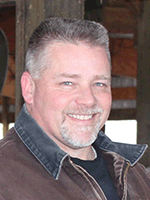
Regional Calf Report: Great Britain – Jerry Ruetten, Vita Plus
 By Jerry Ruetten, Vita Plus Dodgeville dairy specialist
By Jerry Ruetten, Vita Plus Dodgeville dairy specialistOn a recent visit to Great Britain, I had the opportunity to tour a few dairy farms. The first thing that struck me was the age of the farms; not the buildings themselves, but the family generations that have farmed these areas. Some knew the history back 2,000 years where they currently farm.
The second thing that struck me was the overall health of the youngstock, especially the calves. The calves I saw were all housed on bedding packs in loose housing with open sidewall buildings. The group sizes were eight to 12 head per pen. The environment there can be very moist for extended periods of time, but they don’t seem to have big temperature swings or the cold temperature extremes we have in the upper Midwest. Due to this environment, they can use automatic calf milk replacer machines to feed on demand of the calf. They have been using this technology for at least 10 years.
In talking to the producers, it was very apparent that they tried their best to conform and meet the local consumers’ wants and needs. They utilized pastures and grazing as much as possible, and they were very conscious of water quality.
The most interesting marketing idea they were using at the time was to use sexed male semen of the Belgian Blue breed and cross some of their Holsteins with it. By doing this, they were able to sell the offspring for a premium. In early November, they were able to get 400 pounds ($597) per calf versus 50 pounds ($75) for straight-Holstein steer calves.
At the end of the day, we have a lot in common with producers in Great Britain – we are all concerned for the wellbeing of the animals, the land and what the consumer is interested in buying.
| Category: |
Business and economics Starting Strong - Calf Care |

